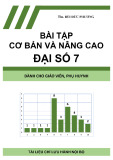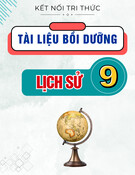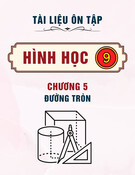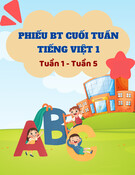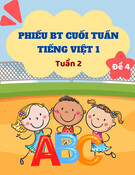
TRƯỜNG THPT PHÚ BÀI
TỔ TIẾNG ANH
***
ĐỀ CƯƠNG ÔN TẬP KIỂM TRA CUỐI KỲ 1 - NĂM HỌC 2023-2024
TIẾNG ANH LỚP 11
A. TRẮC NGHIỆM
I.LANGUAGE
1.Sound
Circle A. B. C. or D to indicate the word that differs from the other three in the position of the
primary stress in each of the following questions
1. A. global B. remind C. release D. produce
2. A. consequence B. temperature C. atmosphere D. renewable
3. A. annual B. balance C. forest D. remove
4. A. balance B. carbon C. methane D. release
5. A. volunteer B. develop C. experience D. pollution
6. A. program B. promote C. prepare D. suggest
7. A. poster B. workshop C. exchange D. teamwork
8. A. issue B. aware C. welcome D. gender
9. A. model B. design C. reduce D. impact
10. A. public B. private C. dweller D. install
11. A. robot B. sensor C. impress D. urban
12. A. footprint B. allow C.limit D. modern
2. Vocabulary
Circle A. B. C or D to indicate the correct answer to each of the following questions
1. Although global warming is causing changes in weather patterns, it is only one aspect of ________
A, global warming B, ecological balance C, climate change D, carbon footprint.
2. Certain ______in the atmosphere such as carbon dioxide, methane and nitrous oxide, block heat from
escaping.
A. effects B. emission C. gases D. layers
3. Most of the jungle was ________________ to get wood in order to produce paper products.
A, deforested B, threatened C, warned D, emitted
4. A large amount of carbon dioxide ________ are released into the atmosphere by burning fossil fuels.
A, emissions B, carbon footprint C, emit D, greenhouse gas
5. Oil spills are a great ____________ to the undersea world
A, threat B, threaten C, threatened D, threateningly
6. After we read the report on how the burning of petrol in cars _________ to climate change, we
determined to reduce our carbon footprint.
A, devote B, contribute C, result D, cause
7. To become a volunteer, you must be _____________ for the program
A. qualify B. qualified C. unqualified D. disqualified
8. You need to _____________ a community project related to the theme for the year
A. reject B. reach C. approve D. propose
9. Ms Pang suggested ______________ their website in order to find out the theme
A. checking B. examining C. inspecting D. investigating
10. Cultural _________ is the best way for young people to understand other countries’ values and ideas
A. change B. exchange C. values D. shock
11. Singapore has made a huge ________________ to scholarships for ASEAN’s students

A. decision B. effort C. contribution D. arrangement
12. Students with good ____________ skills usually communicate well and manage teamwork
effectively
A. analytical B. critical thinking C. problem-solving D. leadership
13. The ____________ friendly products are designed not to harm the natural environment.
A. environment B. environmental C. environmentally D. environmentalism
14. Nonrenewable energy has negative ______________ on the environment.
A. impact B. benefit C. quality D. warning
15. The ___________ of this village can enjoy a good quality of life.
A. infrastructure B. inhabitants C. environmentalists D. researchers
16. The main ___________ to the survival of these creatures comes from their loss of habitat.
A. fuel B. threat C. shortage D. change
3. The word Closest in meaning
Circle A. B. C or D to indicate the word(s) CLOSEST in meaning to the underlined word(s)
1. Greenhouse gas emissions from factories and vehicles can cause global warming
A, cars B, transportation C, burning D, station
2. Global warming has severe impact on water supplies and upset ecological balance
A, positive B, negative C, serious D, remarkable
3. The scholarship is renewed annuallyand may be stopped if the students have poor academic records or
bad behaviours.
A every day B. every month C. every week D. every year
4. Coal burning releases a large amount of carbon dioxide into the atmosphere.
A. discourages B. reduces C. relaxes D. discharges
4. The word Opposite in meaning
Circle A. B. C or D to indicate the word(s) OPPOSITEin meaning to the underlined word(s)
1. Cutting down on energy use is the best way to help reduce global warming.
A. Shrinking B. Declining C. Decreasing D. Increasing
2. Releasing too much carbon dioxide into the atmosphere can lead to global warming.
A. result in B. result from C. cause D. activate
3. In the future, we will use more nenewable sources of energy such as wind and
solar power
A. alternative B. limited C.inexhaustible D. endless
4. The police are conducting a safety awareness programme in local schools.
A. certainty B. security C.danger D. doubt
5. Error Identification:
Mark the letter A, B, c, or D to indicate the underlined part that needs correction in each of
thefollowingquestions.
Gerund
1. I want to travelbecause I enjoy to meet people and seeing new places
A.to travel B. because C. to meet D. new places
2. Wearing uniforms help students feel equal whether they are rich or poor.
A.Wearing B. help C. feel equal D. are
3. She is looking forward to go to Europe after she finishes her studies at the university.
A.is looking B. to go C. finishes D. the
4. One of his hobbies is collectstamps
A. One B. hobbies C. collect D. stamps

Linking verb
5. After being closed for a long period of time, the house became dirty and smelled awfully.
A. being closed B. a long period of C. became dirty D. smelled awfully
6. All the members of committee felt happily about the ultimate decision.
A. All B. members of C. felt happily D. ultimate decision
7.I feel both excited and nervously because I have got a date with Lara tomorrow.
A. feel B. excited C. nervously D. date with
8. Nicole grew tiredlyfrom the hours of overtime at work
A. tiredly B. from C. of D. work
II. READING
1.Read the following passage and circleA. B. C. or D to indicate the correct answer to each of the
questions.
Right now, the biggest source of energy in the world is fossil fuel. Fossil fuels are oil, gas, and coal. More
than 80 percent of the world's energy comes from fossil fuel. There are many problems with fossil fuel. One
problem is that when fossil fuel is burned, it pollutes the air. Also, when we take fossil fuel from the Earth,
we often cause a lot of damage. Another problem is that we are running out of it. That is why we need new
sources of energy. A big source of energy for many countries is nuclear power. Thirty-one countries use
nuclear power. Many ships also use it.
Nuclear power has some advantages. First of all, we can't run out of nuclear power. Nuclear power does
not make the air dirty. Also, if a country has nuclear power, it doesn't need to buy as much as oil from other
countries.
However, there are also a lot of problems that come with nuclear power. For example, nuclear accidents are
very serious. In 1986, there was a nuclear accident in Ukraine. In the next 20 years, about 4,000 people got
sick and died. In 2011, there was another very serious nuclear accident in Japan. Japan is still trying to clean
up the nuclear waste from the accident.
Many people don't want nuclear power in their countries. They say that it is not safe. A lot of people want
their countries to use safer and cleaner ways to get electricity. There have been protests against nuclear
energy in the United States, Russia, France, Taiwan, Japan, India, and many other countries.
Although many people hate nuclear energy, more and more countries are using it. One reason for this is
that the world is using more and more energy. We just don't have enough fossil fuel. However, if we use
nuclear power, then we may have more serious problems in the future.
1. Which of the following is NOT true about fossil fuel?
A. It can pollute the air. B. We don't use much of it.
C. Its sources are limited. D. Mining fossil fuel can bring harm to the environment.
2. All of the following are true about nuclear accidents EXCEPT that ______.
A. they have been very serious B. their effects can last many years
C. it doesn't take us much time to clean up the nuclear waste from the accident
D. there were serious nuclear accidents in Ukraine in 1986 and in Japan in 2011
3. The phrase "clean up" in paragraph 3 is closest in meaning to _______.
A. block B. evacuate C. disappear D. remove
4. What does the word "They" in paragraph 4 refer to?
A. countries B. protesters C. officials D. supporters
5. Which of the following statements would the author of the passage support most?
A. Some governments are wrong when they are using nuclear energy.
B. We should consider seriously nuclear power because it has both advantages and disadvantages.
C. We can continue using nuclear energy until there is an accident.

D.Many people don't want nuclear power in their countries and governments should follow their people.
2. Read the following passage and mark the letter A, B, C, or D to indicate thecorrect answer to each
of the questions.
The 22nd Southeast Asian Games were held in Vietnam from the 5th to 13th December, 2003. Although it
was the first time Vietnam hosted such a big sports event, the Games were a great success. The Games really
became a festival that impressed sports enthusiasts with its spirit: solidarity, co-operation for peace and
development.
Athletes from 11 participating countries competed in 32 sports, and 444 gold medals were won. Some
teams such as table tennis, badminton, karate, volleyball, basketball and wrestling were composed of top
competitors in the region. Many Games records were close to international levels. Vietnam won 158 gold
medals to finish at the top of the Southeast Asian Games medal standings. Thailand ranked second with 90
golds, and Indonesia was third with only 55 golds. Singapore and Vietnam were the two nations which had
participants who were presented with the Most Outstanding Athlete titles in the Swimming and Shooting
events. TheVietnamese Women's Football team successfully defended the SEA Games title. Vietnam and
Thailand played in the Men's Football Final. The Thai Team won the gold medal. In other sports such as
karate, athletics, bodybuilding and wushu, the young and energetic Vietnamese athletes performed
excellently and won a lot of gold medals.
Vietnam's first place finish was not surprising. Firstly, to prepare for the 22nd SEA Games, Vietnam
carried out an intensive programme for its athletes, which included training in facilities, both home and
abroaD. Secondly, with the strong support of their countrymen, the Vietnamese athletes competed in high
spirits. The country's success has proved that Vietnam can organise sporting events on an international level.
A plan has been proposed for Vietnam to host the Asia Sports Games at some point in the future.
1. It can be inferred from the passage that.........
A. Vietnam can organise sporting events better than other countries
B. Vietnam had already planned for the next Sea Games in the future
C. Vietnam prepared its athletes well for the 22nd SEA Games
D. Vietnam protected its first place in SEA Games competition
2. The word "title" in paragraph 2 is closest in meaning to.........
A. power B. label C. headline D. trophy
3. According to the passage, what is NOT true about the 22nd Southeast AsianGames?
A. There were 11 countries participating in.
B. Many athletes had broken the world records.
C. Indonesia ranked higher than Singapore.
D. Vietnamese Women's Football team won gold medal.
4. The word "intensive” in paragraph 3 has OPPOSITE meaning to.........
A. delicate B. flexible C. sensitive D. vigorous
5. What is the writer's main purpose in writing this passage?
A. To explain the reasons why 22nd Sea Games was organised in Vietnam.
B. To express the writer's love and how much he is proud of the country'ssuccess.
C. To introduce top competitors in the region and their ranking in the Games.
D. To show Vietnamese's ability in organising international sporting events.
3. Read the following passage and circle A, B, C, or D to indicate the correct answer to each of the
questions.
Where smart cities were once regarded purely as a vision of the future, they are now becoming a
reality in numerous urban centres across the globe. From Dubai, Singapore, Amsterdam, Copenhagen, and
Madrid to Southampton in the UK, we’re already beginning to see smart cities provide inhabitants with
improved living conditions, easier mobility and cleaner, safer environments, by using cloud computing to

power services. But as with all public sector initiatives, smart city services need to be delivered as cost
effectively as possible to minimise the taxpayer burden. Often, key decision makers are met with obstacles
when it comes to deploying smart services, preventing smart cities initiatives from reaching their full
potential – or worse, blocking them altogether.
Central to the functioning of most ‘normal’ city ecosystems is the underlying data they run on.
Regardless as to whether that data is stored on local servers or using cloud storage, when that data is
fragmented or incomplete, identifying emerging trends for strategic planning and cost reduction becomes
extremely difficult – and because of this, authorities have to adopt an entirely reactive approach.
Conversely, in a smart city environment, connected sensors forming an Internet of Things (IoT) provide
valuable data for analysis and, in turn, insight into the specific city’s behavioural trends. With this level of
information, services can be optimised to reduce costs and risk, increase urban flows and manage assets.
Importantly, they can also provide real-time connections and interactions between the city’s businesses,
local governments, service providers and citizens.
In this way, operations and services are elevated through the integration and connection of physical
devices via IoT networks, ultimately transforming how a city runs.
(Source: https://www.techradar.com/)
1. Which best serves as the title for the passage?
A. A question of data. B. Alignment of minds.
C. Smart city’s supporters. D. The same old route.
2. According to paragraph 1, which statement is correct about the current situation for smart cities?
A. Smart cities promise technological convenience so high service fees are not a problem.
B. Dubai, Amsterdam and Hampton are among the cities advancing the title of “smart”.
C. There still exist many challenges for the institution and development of smart cities.
D. The already successful smart city in the world were the works of policy-makers.
3. The word “they” in paragraph 2 refers to _______.
A. environments B. ecosystems C. services D. initiatives
4. According to paragraph 2, what is the matter that the author want to emphasise?
A. Human’s urge to share information. B. The importance of data network.
C. The possibilities of tech disasters. D. The caliber of artificial intelligence.
5. The word “elevated” in paragraph 3 can be replaced by ______.
A. demoted B. controlled C. dignified D. upgraded
4. Read the following passage and mark the letter A, B, C, or D to indicate thecorrect answer to each
of the questions.
The costs and benefits of global warming will vary greatly from area to area. For moderate climate change, the
balance can be difficult to assess. But the larger the change in climate, the more negative the consequences will
become. Global warming will probably make life harder, not easier, for most people This is mainly because we have
already built enormous infrastructure based on the climate we now have.
People in some temperate zones may benefit from milder winters, more abundant rainfall, and expanding crop
production zones. But people in other areas will suffer from increased heat waves, coastal erosion, rising sea le vel
more erratic rainfall, and droughts.
The crops, natural vegetation, and domesticated and wild animals (including seafood) that sustain people in a given
area may be unable to adapt to local or regional changes in climate. The ranges of diseases and insect pests that are
limited by temperature may expand, if other environmental conditions are also favourable.
In its summary report on the impacts of climate change, the Intergovernmental Panel on Climate Change stated,
"Taken as a whole, the range of published evidence indicates that the net damage costs of climate change are likely to
be significant and to increase over time.”
1. What is the main idea of the passage?




![Bài tập so sánh hơn và so sánh nhất của tính từ [kèm đáp án/mới nhất]](https://cdn.tailieu.vn/images/document/thumbnail/2025/20250808/nhatlinhluong27@gmail.com/135x160/77671754900604.jpg)
![Tài liệu tham khảo Tiếng Anh lớp 8 [mới nhất/hay nhất/chuẩn nhất]](https://cdn.tailieu.vn/images/document/thumbnail/2025/20250806/anhvan.knndl.htc@gmail.com/135x160/54311754535084.jpg)
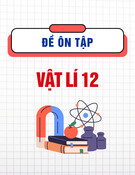

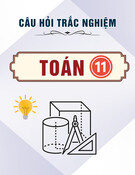
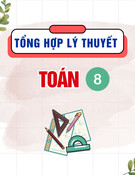
![Tài liệu Lý thuyết và Bài tập Tiếng Anh lớp 6 [Mới nhất]](https://cdn.tailieu.vn/images/document/thumbnail/2025/20250802/hoihoangdang@gmail.com/135x160/18041754292798.jpg)
